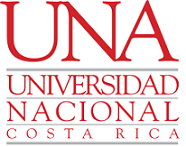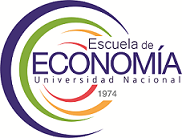Estimation of CO2 emissions that create tax collection in Costa Rica
DOI:
https://doi.org/10.15359/eys.28-63.1Keywords:
taxes, input-output, aggregate value, greenhouse gas, jobAbstract
It seeks to estimate the contribution of the productive sectors and households with the generation of GHG emissions in Costa Rica and at the same time determine the relationship between the creation of jobs and added value with the generation of CO2 emissions by sector. The analysis involves tax collection through the payment of the tax on fuels, using the methodology of the Input Product Model with environmental expansion considering the 2017 MIP. Indicators are constructed that show the dependence of the productive sectors and households with respect to the use and consumption of hydrocarbons. The analytical exercise makes it possible to warn about the need to reorient production and households towards more eco-efficient processes that favor the creation of added value and a clean source of employment.
References
BCCR (2017). Cuenta energía principales cifras 2017. https://www.bccr.fi.cr/indicadores-economicos/DocCuentaEnergia/Cuenta-energia-principales-cifras-2017.pdf
BCCR (2017). Matriz Insumo Producto 2017 Producto por Producto. https://www.bccr.fi.cr/indicadores-economicos/cuentas-nacionales-periodo-de-referencia-2017
BCCR (2020). Actualización de la Cuenta de Energía para el 2020. https://www.bccr.fi.cr/comunicacion-y-prensa/Docs_Comunicados_Prensa/CP-BCCR-043-2020-Actualizacion_Cuenta_Energia_2017.pdf
Blanco Salas, K. Chacón Araya, A. Jiménez Valverde, G. Sasa Marín J. y Montenegro Ballestero, J. (2015). Inventario Nacional de gases de efecto invernadero y absorción de carbono 2015. https://cambioclimatico.go.cr/wp-content/uploads/2020/10/NIR-2015-InventarioGEI.pdf?x71265
Contraloría General de la República, CGR. (2021). Desafíos de la transición energética desde la perspectiva de la hacienda pública. https://cgrfiles.cgr.go.cr/publico/docsweb/documentos/publicaciones-cgr/otras-publicaciones/informe-transicion-energetica.pdf
Miller, Ronald E., y Blair, Peter D. (2009). Input-Output Analysis Foundations and Extensions. Segunda edición. Ed. Cambridge University Press, Reino Unido, 2009.
Ministerio de Hacienda (2021). Cifras mensuales de ingresos y gastos. https://www.hacienda.go.cr/contenido/139-cifras-mensuales-de-ingresos-gastos-y-financiamiento-del-gobierno-central
Refinadora Costarricense de Petróleo (RECOPE), (2021). Reporte de ventas anuales (barriles y M3). https://www.recope.go.cr/productos/ventas/
Schuschny, A. R., United Nations, Economic Commission for Latin America and the Caribbean, & División de Estadística y Proyecciones. (2005). Tópicos sobre el modelo de insumo-producto: Teoría y aplicaciones. Naciones Unidas, CEPAL, División de Estadística y Proyecciones Económicas.
Downloads
Published
How to Cite
Issue
Section
License
This publication is subject to the Creative Commons License; therefore, its attributions and restrictions must be respected.
Authors publishing in this Journal accept the following conditions:
- Authors retain copyright ownership and give the Journal first publication right of the paper, which is registered with the Creative Commons Attribution-NonCommercial-ShareAlike 4.0 International License. This license allows third parties to use the published work provided it is sourced as firstly published in this Journal.
- Authors may enter into other independent and additional contractual agreements for the non-exclusive distribution of the article published in this Journal (e.g., to be included in an institutional repository or published in a book) provided it is clearly stated that the work was published in this Journal for the first time.
- Authors are allowed and recommended to publish their work on the Internet (for example, on institutional or personal pages) before and during the review and publication process, as it can lead to productive exchanges and a greater and faster dissemination of work published.

The Economía & Sociedad Journal, published by Universidad Nacional, is licensed under a Creative Commons Reconocimiento-NoComercial-CompartirIgual 4.0 Internacional License. Based on http://www.revistas.una.ac.cr/index.php/economia.







